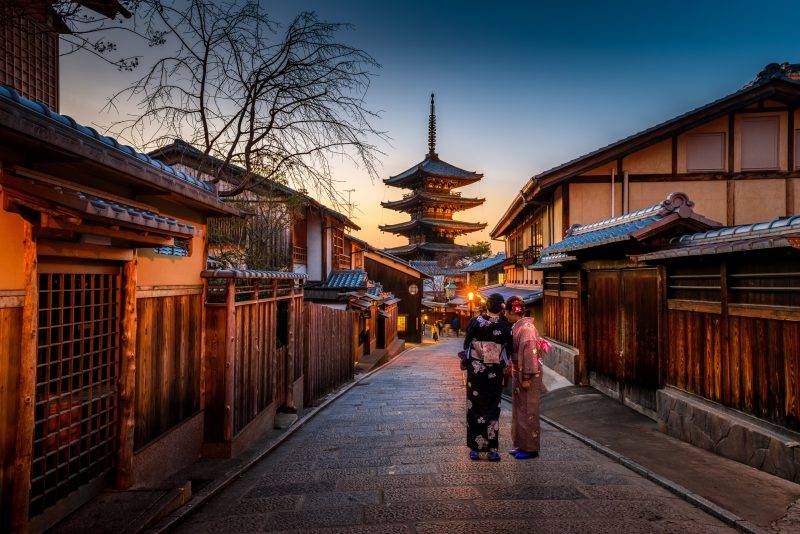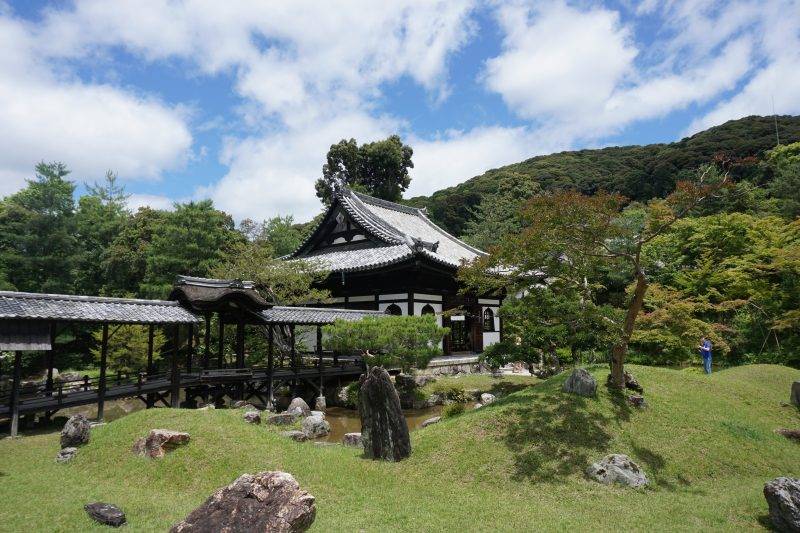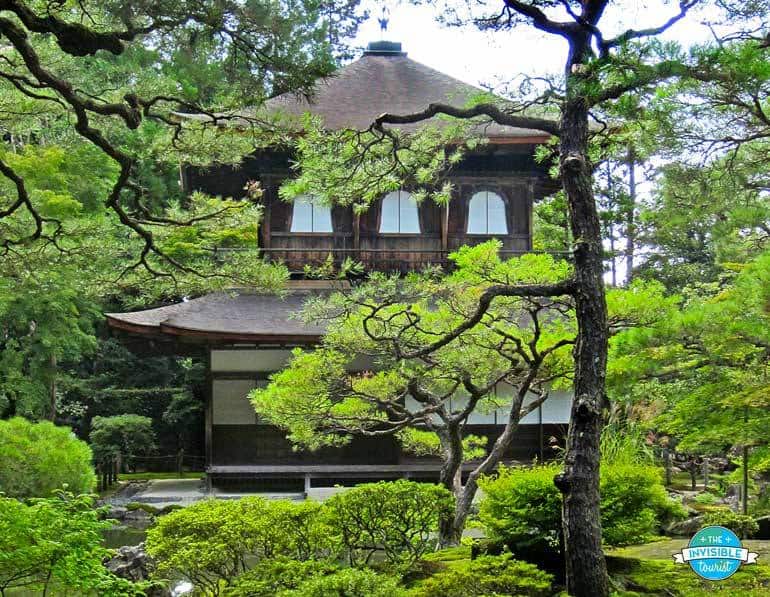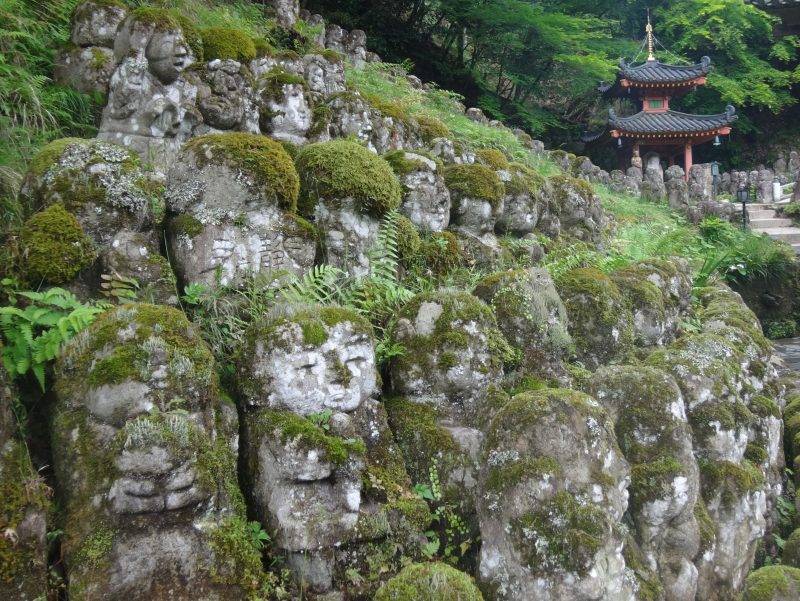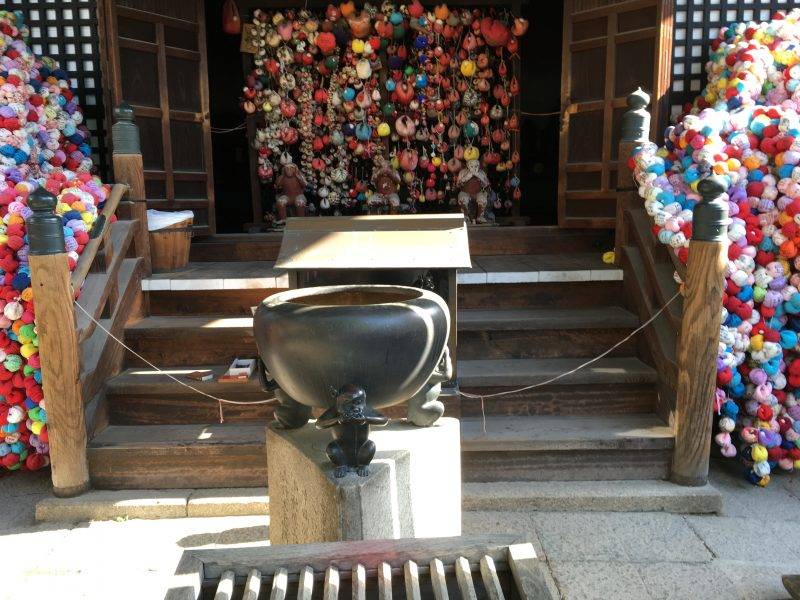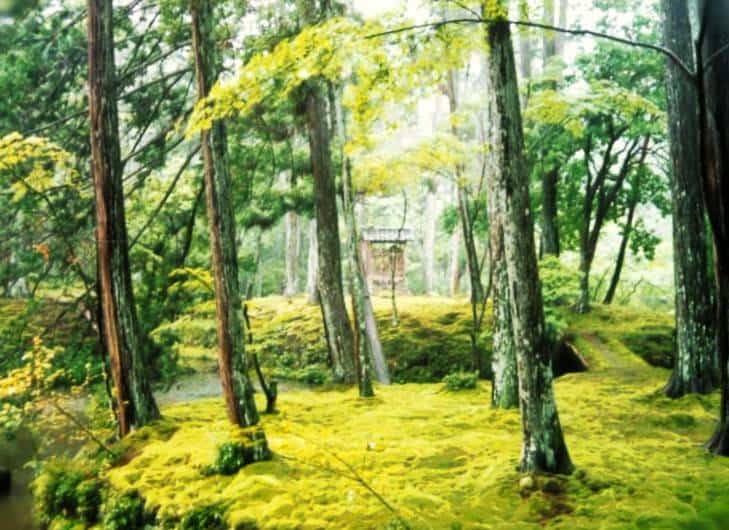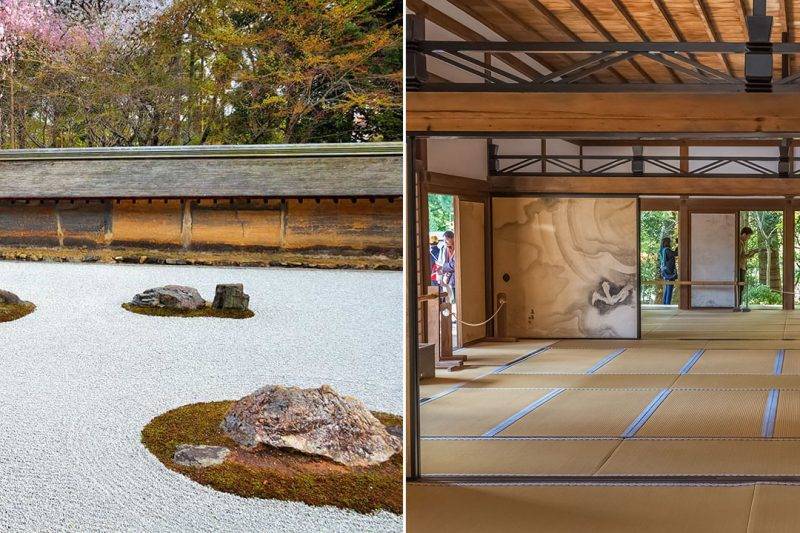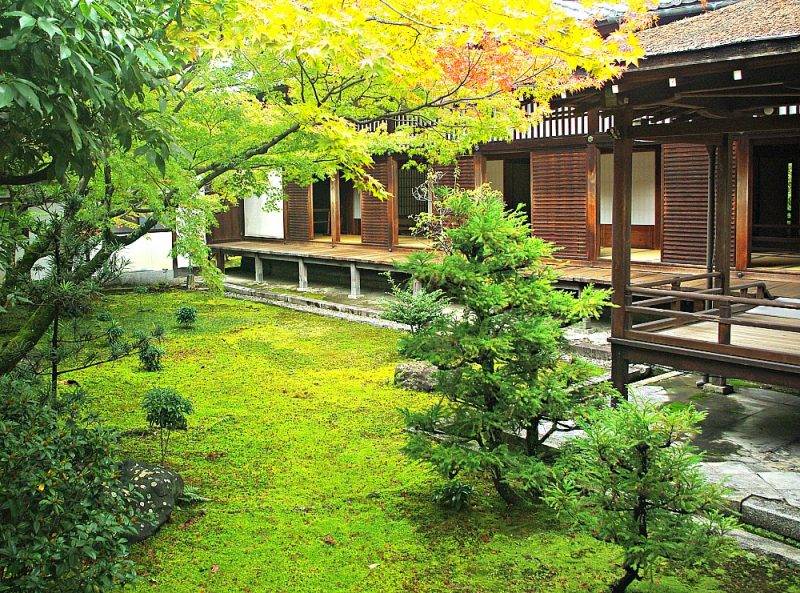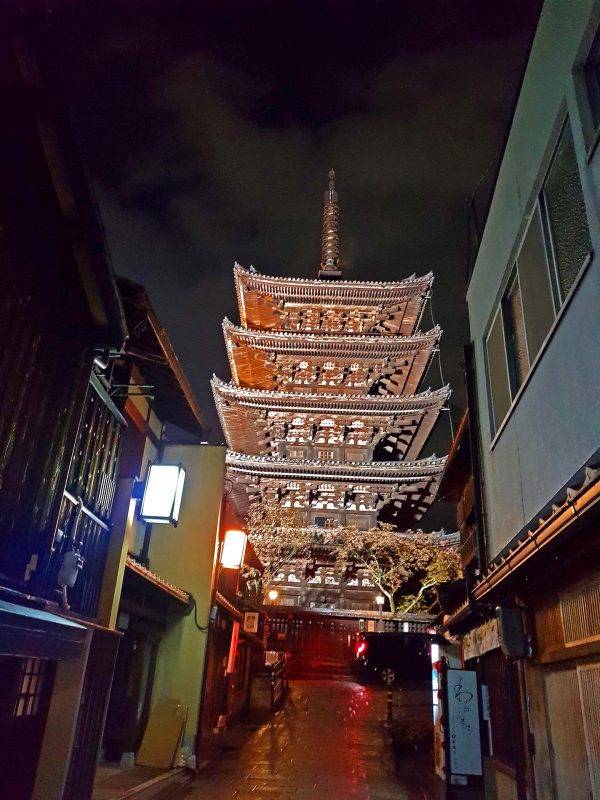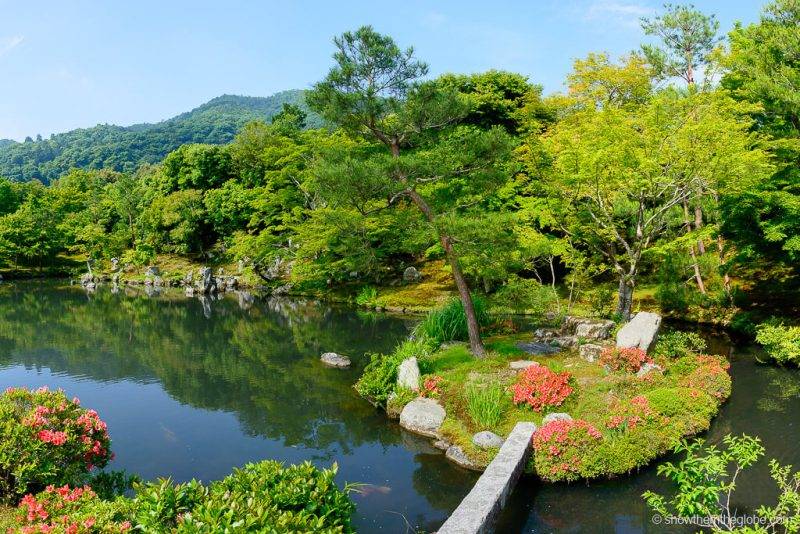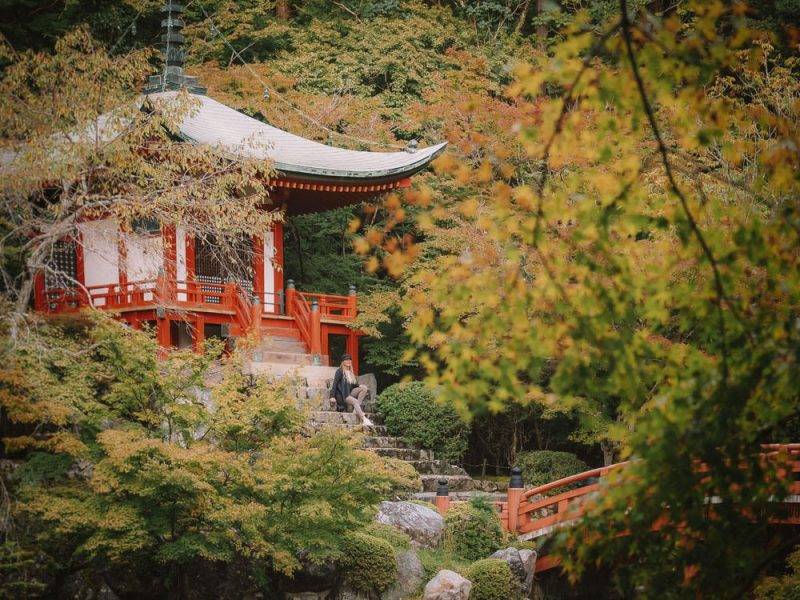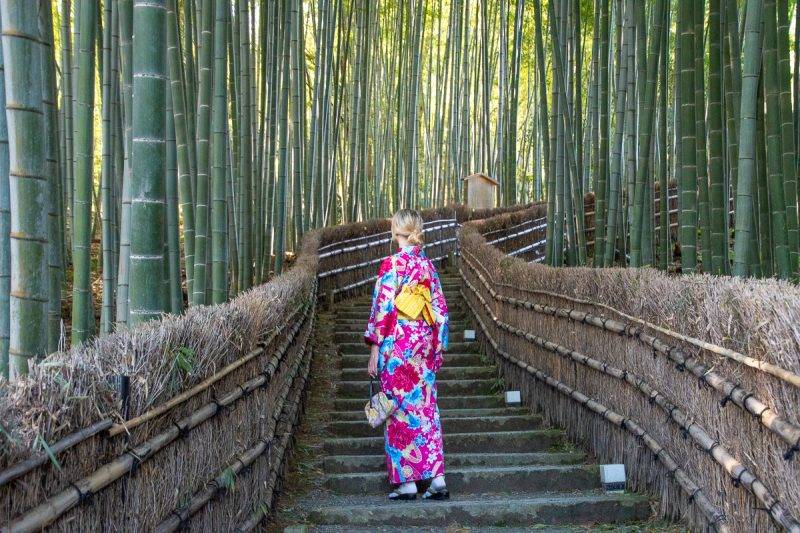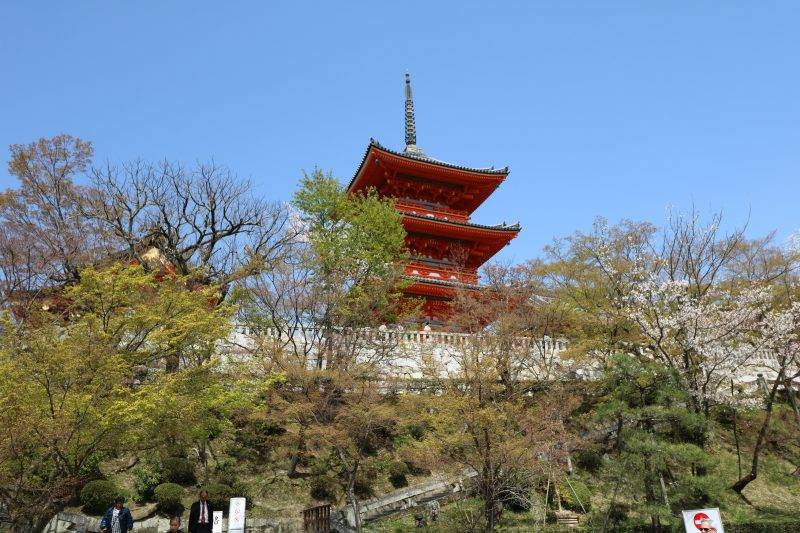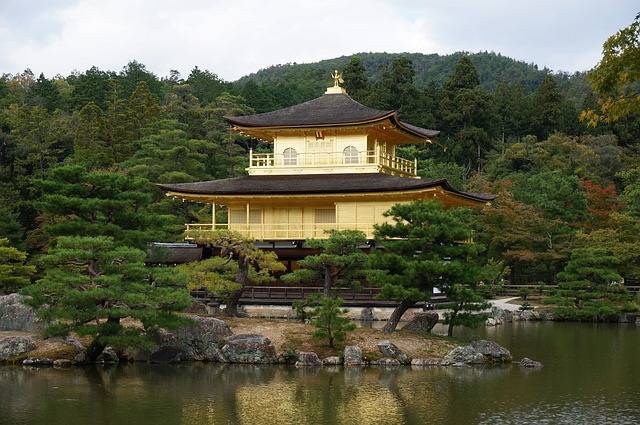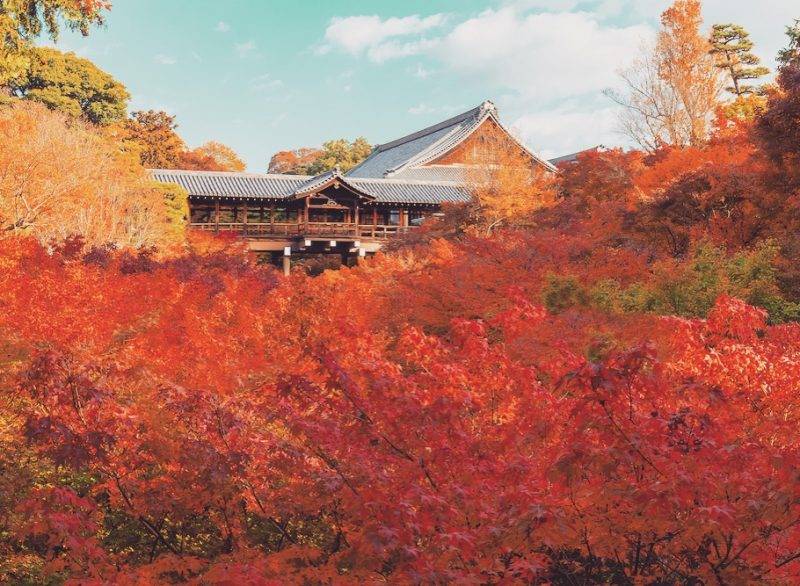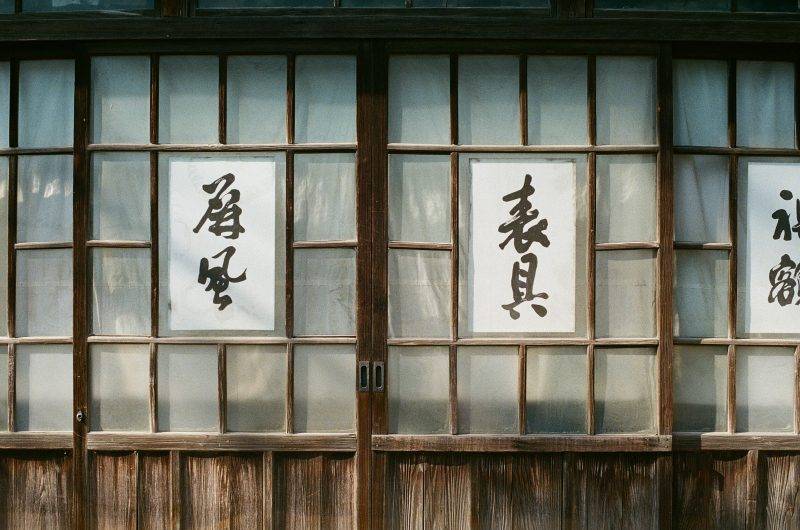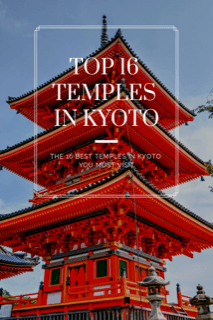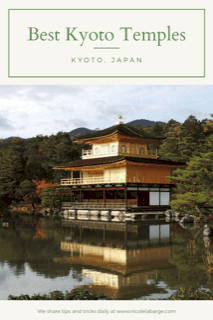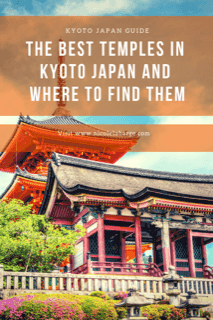16 Best Temples in Kyoto and where to find the Temples of Kyoto
This list includes all the best temples in Kyoto and includes all the famous Kyoto temples. There are many Buddhist temples in Kyoto to choose from and this list includes the most popular and famous Kyoto temple – the Kyoto Kinkakuji Temple.
How many temples are there in Kyoto?
Did you know there are over 1600 temples in Kyoto Japan? This list of the top temples in Kyoto includes the moss temple Kyoto, Daigoji temple Kyoto, several zen temples in Kyoto, temple of 1000 Buddhas Kyoto, Tofukuji temple Kyoto and the most famous temple Kyoto – Kinkakuji.
Must see temples in Kyoto – best Kyoto temples
Kodai-Ji Temple Kyoto
Established in 1606, The Kodai-Ji Temple is of the Rinzai school of Zen Buddhism, is tucked away in the Southern Higashiyama Area and nestled in next to many other famous Kyoto attractions such as Yasaka Shrine, Ninenzaka and Kiyomizudera.
For whatever reason, Kodai-Ji can often be neglected by tourists for sightseeing in the city area, which is a real shame, because this underrated attraction is of scenic beauty and is easily one the most beautiful temples to visit in the Kyoto Region.
What’s so interesting about this temple is the excellent design of the buildings, which blends in perfectly with the surrounding landscapes and the picturesque highlands in the background. The tranquil atmosphere helps to create a peaceful stroll through the temple grounds, the impressive garden features and its very own miniature bamboo grove, that is not quite to the extent of the Arashiyama version.
Kodai-Ji Temple comes with an admission fee of 600-yen for an adult ticket, yet, there will be no regrets once inside the gates of the temple because you could easily spend a good hour or two wandering around the beautiful temple and taking amazing pictures in the process.
Anthony from Fair Dinkum Traveller
Ginkaku-ji Temple of Kyoto
Did you know that Kyoto’s famous Golden Pavilion has a little brother? Located in Higashiyama in the north-east of this ancient city lies Ginkaku-ji, also known as the Silver Pavilion. For me, it’s one of the most memorable places to see in Kyoto as it was the temple that surprised me the most!
Modelled after its more famous older sibling, this zen temple didn’t get its name because it was covered in silver. In fact, the nickname is thought to have been inspired by the silvery light of the moon reflecting on the building during the 15th century, giving it a silver appearance.
On entering the magnificent grounds, I was welcomed with a lovely feeling of calm as I passed by the flawless gravel zen garden. From here, a meandering stone pathway leads to a beautiful pond beneath iconic Japanese maple trees.
The best part of the gardens is the incredible view over the grounds and Kyoto’s outskirts from an observation deck from the mossy hillside. Even the stairway up to this deck creates a pleasant atmosphere as small waterfalls and streams trickle down the hill as you climb.
If you’re planning to visit Ginkaku-ji and yearn for the tranquillity these gardens were designed for without crowds, a visit in the late afternoon is very enjoyable. Additionally, ensure you find out the dos and don’ts in Japan to make the most of your visit!
Alyse from The Invisible Tourist
Otago Nenbutsu-Ji
It’s a bit of a walk uphill to get to this temple tucked away in the Kyoto hills and, if you’re not a bit winded by the time you get up there, you’ll be speechless when you enter.
Stone paths wind from the temples entrance up to a bright red pagoda hiding among trees further up the hillside and all around, as far as the eye can see are tiny stone figures – all covered in moss.That’s amazing enough; but now, look closer at their faces, their posture, their outfits. That’s right – they’re all different.
And they most definitely aren’t the spiritual statues you expect either – yes, lots of them have their hands pressed devoutly together as if praying, but there’s also quite a few modelling jaunty hats and a couple of them are even having a drink!
You could spend hours here spotting your favourite one – there’s even one that looks like suspiciously like Bran from Games of Thrones!
The official address of Otagi Nenbutsu-ji is Fukatani-Cho, Saga Toriimoto, Ukyi-ku, Kyoto. It costs 300 yen to get in and is open from 8am to 5pm. If you don’t feel like walking there are a couple of local buses that will take you up the hill – check google maps for details.
Yasaka Koshindo
You’ll find this temple in one of Kyoto’s most popular tourist districts Higashiyama. Standing outside looking at the simple, red wooden gate that marks the entrance you might be expecting to find a small sedate shrine inside – instead you find a riot of colour.
Tiny fabric balls in different colours hang off every surface. It looks like a pom-pom factory exploded – but they actually represent some serious stuff.
See, to pray at Yasaka Koshindo you write a desire you wish to banish on one of the tiny fabric balls and hang it up on one of the many shrines and displays that dot the courtyard. This is said to take away your negative desire and help a more positive wish come true.
If you wander around the shrine, you’ll also notice statues and plaques depicting what we in the west know as the Three Wise Monkeys – ‘hear no evil’, see no evil’ and speak no evil’. The monkeys actually come originally from Japanese religion and the little balls you see everywhere actually represent monkeys with their feet tied together. And you thought it just made for a good Instagram pic!
The temple courtyard is very small and so you’ll want to get to this temple pretty early in the morning if you can but its an unusual thing to do in Kyoto. It’s at 390-1 Kinencho, Higashiyama Ward, Kyoto, 605-0828.
Helen from Differentville
Saiho-ji
Saiho-ji is also called Koke-dera “Moss Temple” because of the more than 200 varieties of moss that grow in the garden. The moss is lush and beautiful, but the temple has even more to offer. The garden is a gorgeous green and golden forest spread around a heart-shaped lake. The “heart” is the shape of the Japanese kanji character for the word “heart”, which is created using three tiny islands. Traditional wooden tea houses are scattered around the garden too. There is also a “dry garden” with stones and raked sand.
A visit to the temple involves more than just the garden, however. All visits begin with a ritual activity in the temple. Sometimes this is chanting and sometimes it is copying the heart sutra, which is a fun introduction to Japanese calligraphy, even if you have no idea what the characters mean.
The best time to visit the Kyoto moss temple is in spring, when the rains of the spring wet season make the moss its most beautiful, but any time of year is OK. Visiting Saiho-ji is not as simple as showing up, however. You need to make a reservation, which you can only do by sending a very specific self-addressed return postage postcard to the temple at least a month in advance. If you don’t live in Japan, the easiest thing is to ask your hotel if they will do this for you. Then take the returned postcard with you at the designated time, as it is your ‘ticket’. You pay a fee to enter when you get there. It’s a little complicated, but worth the effort.
James from Travel Collecting
Ryoan-Ji Temple & Garden
Ryoan-ji temple’s main attraction is its dry garden which is overlooked from within the temple, on its verranda. The room pictured inside the temple is the head priest’s former residence.
Its garden consists out of carefully landscaped moss pads with rocks on them, sitting in a sea of white pebbles raked into linear patterns. The surrounding nature rising up from behind the temple walls gives this whole a good canvas to shine on.
Its simplicity coupled with its meticulous attention to detail is what makes it stand out. I highly recommend you visit to this temple if you enjoy nature and peace. Go in the early morning or just before it closes to avoid the crowds though.
The temple area also has a park and lake to explore, as well as a tofu restaurant with a view.
If you like to experience traditional architecture in Kyoto’s streets as well, don’t miss Kyoto’s Gion district. You’ll find good temples and shrines to visit there as well, such as Kenninji Temple which has an impressive painting of two dragons on one of its halls ceilings.
Paul from Journey Compass.
Ninna Ji
It is a short but compelling walk from Keifuku Omuro-Ninnaji Station in Western Kyoto, to the huge entrance gate of Ninna-Ji temple. Two scary sculptures of Nio or Kongōrikishi, the original guardians of Buddha, stand fiercely either side of the gate giving it the name “Niomon”. This gate is one of the three most famous temple entrance gates in Kyoto.
Behind the Niomon gate, is an equally huge and impressive complex, a reminder of the centuries when Ninna-Ji’s head priests were sourced from the Japanese Royal Family.
The Goten palace is a cluster of elegant Japanese timber buildings joined by raised timber walkways. With the sliding wall screens open wide, visitors can see into the rooms and out to zen raked sand or sculpted green gardens.
From the Nioman Gate a wide path cuts straight through the grounds to the Kondo Hall at the very back. Other important things to see here are the distinctively coloured Chumon Gate, Reihoken museum, five-storied pagoda and orchard of late flowering dwarf Omuro Sakura trees.
Originating in AD888, the current buildings are mostly from the 17th century. Ninna-Ji is the Head temple of the Omuro School of Shingon Buddhism, one of the major Buddhist sects in Japan.
Compared to the close-by temples of Ryoan-Ji and Kinkaku-Ji whose crowds can be a hindrance, Ninna-Ji is generously proportioned and perfect for a leisurely stroll.
Jan from Budget Travel Talk
Hokanji temple
The Hokanji temple is located in the Higashiyama District, one of the best-preserved historic districts of Kyoto. The district itself is worth a visit alone, it is a maze of narrow alleys lined with authentic or beautifully restored wooden buildings. When you stroll through this neighborhood you cannot help but see the impressive 5-storied pagoda of this Hokanji temple. The temple is often referred to as the Yasaka Pagoda because of this iconic 46-meter tall pagoda and the nearby Yasaka Shrine.
The pagoda is very picturesque and it may well be the most photographed landmark in this part of Kyoto. The streets are usually very crowded at daytime but a lot quieter in the evening, allowing for good photo opportunities. There’s an incredible number of things you can do in Kyoto at night and we found this one of the most memorable.
The temple is occasionally open to the public and visitors are allowed to go up to the second storey from where you have a good view on the quaint houses of the surrounding Higashiyama District.
Most other pagodas can only be viewed from outside. A visit to this pagoda is a unique opportunity to see how, already in the 12th century, Japanese used unique techniques in their constructions to make the pagodas earthquake-proof.
Sylvia from Wapiti Travel
Tenryu-ji Temple, Kyoto
The 14th Century Tenryu-Ji Temple is one of the most impressive temples in Kyoto. Located beside the iconic Arashiyama Bamboo Grove, the Tenryu- Ji Temple is the head temple within the Rinzai Zen sect of Japanese Buddhism.
The temple itself is beautiful but it is the stunning gardens that make Tenryu-ji so special. The sprawling gardens are centred around a pond and are set against the beautiful backdrop of the Arashiyama Mountains. Although the temple was built in 1339, the buildings were destroyed in fires and were rebuilt just over 100 years ago. However, the gardens survived throughout the centuries. Walking through the gardens is an incredibly peaceful experience and we loved exploring the gardens and appreciating their beauty.
Another highlight of Tenryu-Ji, the Cloud Dragon painting, is housed on the ceiling of Dharma Hall. As well as being an incredible painting, it also has a unique quirk: no matter where you stand in the hall, the dragon’s eyes will be gazing right back at you. This symbolises the dragon’s protection of Buddhism and it is certain to have you gazing to the sky in awe.
Tenryu- Ji Temple is one of the 17 UNESCO listed temples in Kyoto and is considered one of the top 5 grand Zen temples in all of Kyoto.
Elaine & David of Show Them The Globe
Daigo-Ji Temple
Daigo-Ji is a stunning Buddist temple designated a UNESCO World Heritage site as part of the Historic Monuments of Ancient Kyoto. Enshrouded in beautiful Japanese maple trees, Daigo-Ji is particularly picturesque during Autumn, when the surrounding foliage offers vistas red, orange, yellow and green. Although I cannot speak from personal experience, but apparently Daigo-Ji also provides good cherry blossom viewing during Sakura.
Daigo-Ji is located to the south-east of Kyoto, just a short train ride on the Tozai subway line. Alight at the Daigoji Tozai subway station and the temple is an easy 15 minute walk from the station.
Daigo-Ji is actually part of a large temple complex, featuring three parts – the Sanboin temple, Shimo-Daigo, Kami-Daigo – with surrounding Japanese zen gardens. The most spectacular of the temples is located at the rear of the complex, well worth the 15 minutes walk from the entrance. The entry price to Daigo-Ji will set you back around Y1500, but it’s well worth the price.
Daigo-Ji really is a hidden gem and must visit place in Kyoto, if you’re looking for somewhere that’s a little less frequented by tourists than most of the more well-known temples around the city.
Amanda from Fly Stay Luxe
Adashino Temple
Adashino Temple is one of the hidden gems of Kyoto, and few tourists know about this place. What makes it so special are firstly the hidden bamboo grove where you can get even better photos and views than in the main bamboo forest of Arashiyama.
Secondly, Adashino temple is also home to a very interesting cemetery. The full name of the temple is Adashino Nenbutsu-ji, and here you can admire 8000 Buddha statues. It gives you that ancient feeling of Kyoto that tourists dream about, and the nearby Saga-Toriimoto street is also worth seeing on your way to the temple with traditional houses from the Meiji period.
Adashino Temple is a resting place for thousands of souls that have been buried here from as early as the 8th century. To get here I recommend using Google Maps, as it is about 20 minutes walk from the Arashiyama Bamboo Forest. You can also get a pulled rickshaw taxi to the temple if you want to transport yourself as they did back in historical Kyoto.
The Entrance fee is a mere 500 Yen, which is about 5 USD. Opening hours are from 9:00 a.m – 4:30 p.m. You don’t have to come here early to enjoy it since only a few foreigners know about this temple. Most visitors are Japanese tourists or School children from Kyoto.
Alex Waltner – Swedish Nomad
Kiyomizudera
Kyoto, for me, always conjured up images of traditional Japan, Geishas and beautiful temples. When I finally got the chance to visit Kyoto, I got to experience all this and more.
One of my favorite temples in Kyoto was the Kiyomizudera. I visited the temple during late March which is the perfect time since it’s surrounded by gorgeous pink and white cherry blossoms that enhance the beauty of the temple even more. I’m told that the temple also looks great during fall when the maple trees around it change color.
Apart from admiring the beauty of the temple, I also loved shopping on Matsubara Dori which is full of interesting shops selling souvenirs, clothes, shoes, and cafes. However, the drawback is that this narrow road is not limited to pedestrians. So, it can get busy because of the traffic and the surge of tourists all going up to Kiyomizudera. If you want to avoid the tourists and traffic and have a peaceful walk, there’s an alternate route to Kiyomizudera. I have written all about it in the linked post. Check it out!
Pari from Traveling Pari
Kinkakuji
The golden temple is better known as Kinkakuji and is one of the most recognized and popular temples to visit in Kyoto. Created originally as the retirement villa for the Ashikaga Yoshitsu, the villa was later converted into a zen temple after his death in 1407.
The temple pavilion and gardens are outstanding to witness and explore and the actual gold leaf covering the various levels of styles the temple is built in. There are statues of the buddha and Yoshimitsu inside but no one is allowed to enter, you can just walk around the outskirts of the temple grounds which is separated by a large pond. The rest of the gardens are fun to explore with lots of beautiful landscape, monuments, life scaled outdoor bonsai trees and some colorful perennials.
The views from the walk up to the top showcase the temple and surround areas below which is a perfect photo opportunity. Check out my visit to the golden temple at Kinkakuji here for more images and inspiration to visiting the pavilion grounds.
Noel from Travel Photo Discovery
Tofukuji
The four seasons in Japan is truly enchanting. Tourists get to see different faces of an attraction at different times of the year. Remember to do some research and plan your trips so you could plot your route and visit the best spots – Philosopher’s path in spring, Arashiyama in summer, or Kinkakuji in winter… and Tofukuji is definitely a highlight for fall.
Tofukuji is located on the south side of Kyoto and best-known for foliage viewing. Built in the year of 1236, the temple celebrated a long history and one of the “five great Zen temples of Kyoto”. In fact, the purpose of building the temple was to rival the other two great temples in Nara: Todaiji and Kofukuji; hence the name of the temple was derived from “To” and “Fuku” in these two temples. The original buildings were unfortunately destroyed in the 14th century, the structures were then faithfully rebuilt and retained its tranquility and serenity.
The best photo-taking spot is a wooden bridge that connects the JR train station to the main gate of the temple. There, tourists can have an unobstructed view of the traditional wooden Tsuten Bridge that straddles across the sea trees. The dark wood and black tiles of the architecture added much solemn quality to the entire view. However, beware that the temple can get very crowded during the peak season.
Knycx Journeying
Kennin Ji Temple – the oldest temple in Kyoto
Kennin Ji Temple is a sanctuary in Kyoto near Gion. This temple has beautiful zen gardens with karesansui (which is a dry gravel “Zen” garden). You can also find two dragons painted on the roof of the Hodo Hall.
Its a beautiful place to visit to get away from the hustle and bustle of the city and chill out.
Conclusion – Temples of Kyoto Buddhist Temples
If you only have a day in Kyoto I suggest visiting a few different temples in the area you are visiting. For me there are a few standout such as the Gold Temple and Adashino Temple since you will probably visit the bamboo forest on your trip to Kyoto.
Sharing is caring! Pin this article to save for later.
Continue Reading:
- Day Trips from Tokyo
- Visiting Japan in Winter
- Osaka Two Day Itinerary
- Osaka at Night things to do
- Tokyo Three day Itinerary
Recent Posts
Welcome to the enchanting world of Óbidos, a medieval gem nestled in the heart of Portugal. If you are wondering what to do in Obidos, you are in the right place. This list of best things to do in...
15 Best Things to do in Nazare: Guide to Portugal's Surf Paradise
Embracing Nazaré’s Coastal Charm Nestled along Portugal's Silver Coast, Nazaré is a picturesque fishing village that has recently soared in popularity, not just for its rich history but for...

